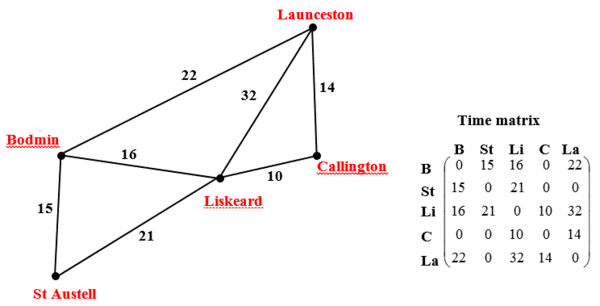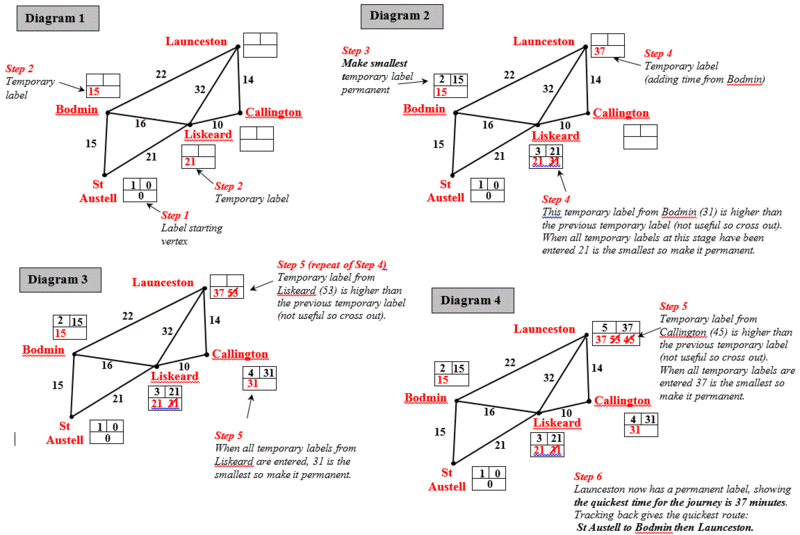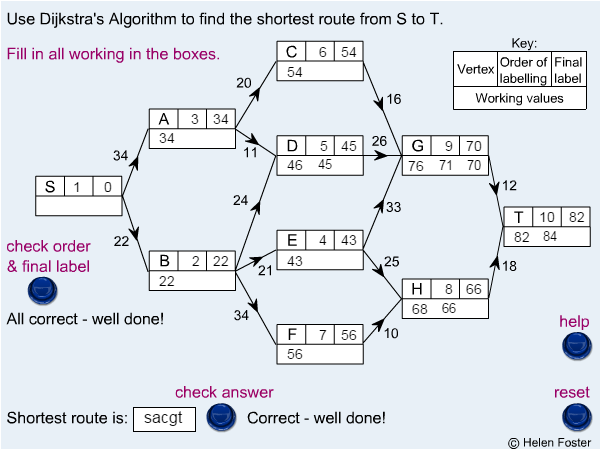Difference between revisions of "Shortest Path"
(→Overview) |
|||
| Line 3: | Line 3: | ||
https://www.youtube.com/watch?v=HXINXtriDQc&list=PLCiOXwirraUB0HOYmEbmx-7KStKtoXZ6E&index=9 | https://www.youtube.com/watch?v=HXINXtriDQc&list=PLCiOXwirraUB0HOYmEbmx-7KStKtoXZ6E&index=9 | ||
| + | |||
| + | ===TRC PowerPoints=== | ||
| + | [https://studentthomrothac-my.sharepoint.com/:p:/g/personal/wayne_jones_thomroth_ac_uk/EXvXtaURUkdKgDtfPSnImvoBt06zbZhcItJI5QOZRdjgwg?e=te0OrQ Example 1] | ||
| + | |||
| + | [https://studentthomrothac-my.sharepoint.com/:p:/g/personal/wayne_jones_thomroth_ac_uk/EXRkeEPokjZCuVrZzVB0mY0BKTBsuIQjzjUXpcaXcHBLqA?e=gftdjY Example 2] | ||
==Dijkstra== | ==Dijkstra== | ||
Latest revision as of 11:48, 17 September 2018
Overview
https://www.youtube.com/watch?v=HXINXtriDQc&list=PLCiOXwirraUB0HOYmEbmx-7KStKtoXZ6E&index=9
TRC PowerPoints
Dijkstra
The shortest path is usually found by Dijkstra's algorithm. The algorithm functions as follows:
Step 1 Give the permanent label 0 to the starting vertex.
Step 2 Give temporary labels to each vertex that is connected directly to the starting vertex.
Step 3 Find the vertex with the smallest temporary label, number it and make it permanent.
Step 4 Give temporary labels to each vertex that is connected directly to the previous vertex. Then find the vertex with the smallest temporary label, number it and make it permanent.
Step 5 Repeat Step 4 until you have given a permanent label to the finishing vertex.
Step 6 Use the permanent labels to trace back through the network to find the shortest path.
Step 7 The shortest path is found by tracing back in such a way that an edge is only included if its distance equals the change in label values.
Example
This is the starting graph and values:
The stages to identify the shortest path from St. Austell to Launceston:


